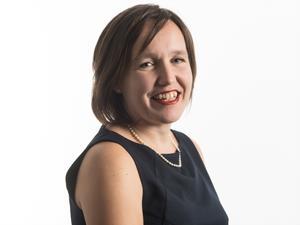... and how you can participate in the International Year of Crystallography

Following David Read’s excellent introduction in May, it is now my turn to do the honours and write the editorial for the July issue on Karen’s behalf while she’s at home recovering from a knee operation. As a result of her absence, I’ve been more involved than normal with the preparation of the magazine and I hope you agree it continues to look great and is packed with useful and interesting content.
For me, one of the highlights this month is John Dexter’s Endpoint. His comment piece, titled ‘A plea from the trenches’, is a must read. It follows the release by the Royal Society of Chemistry of a report calling for action on the training of chemistry teachers and makes many valid suggestions to improve ‘the quality of the person teaching the chemistry.’ And these suggestions go from the relatively simple – eg allowing teachers to take the time off to do CPD – to the more complicated yet transformative – eg sharing teachers and offering sabbaticals to spend time back at university or retraining. I’m sure we’ll all agree with John that it is the ‘quality of the person teaching’ that is important but also that if chemistry and how it is taught are vital to this country and its economy we must do everything in our power to ensure that educators flourish and develop in a supportive environment. I do invite you to read it and send us your thoughts.
There is also an article by Rebecca Trager that I would like to draw your attention to. In ‘To lecture or not to lecture’ a group of scientists in the US conducted an analysis of more than 200 studies and found that undergraduate students enrolled in STEM courses featuring traditional lecturing were one and a half times more likely to fail than those in classes with ‘active learning’. This of course also has an impact on average examination scores, suggesting that teaching and learning should be supported by students participating in discussions, getting involved in problem solving, etc. EiC has been showcasing innovative teaching methods throughout the years and we are delighted that this latest study supports a positive trend towards active learning.
It is also important that I mention a series of articles especially commissioned to celebrate the International Year of Crystallography (IYCr). The first one is a feature by Peter Hoare and Susan Henderson for EiC, where they discuss the use of crystal structures to help both school students and early years undergraduates visualise molecules in 3D.
Turn to page 5 of The Mole for Stephen Ashworth’s ‘Giant edible crystals’ and then continue to page 6 for the latest adventures of Flask in a Mask. This is a comic by the talented Jess Ham featuring Britain’s 2nd best and only secret chemistry agency, with Diffraction Man making a guest appearance.
And finally I should mention that the RSC is running a global experiment about the art of crystallisation to celebrate IYCr. We would like as many students as possible to get involved and do the experiment at home or in their schools. Encourage your students to take part and help us answer the following question: ‘What are the best conditions for growing the biggest crystals?’.
If you do take part, you’ll be growing your own crystals, testing the solubility and properties of various samples and then posting your data on a global interactive map and comparing your results with students around the world.
Bibiana Campos-Seijo, Publisher









No comments yet